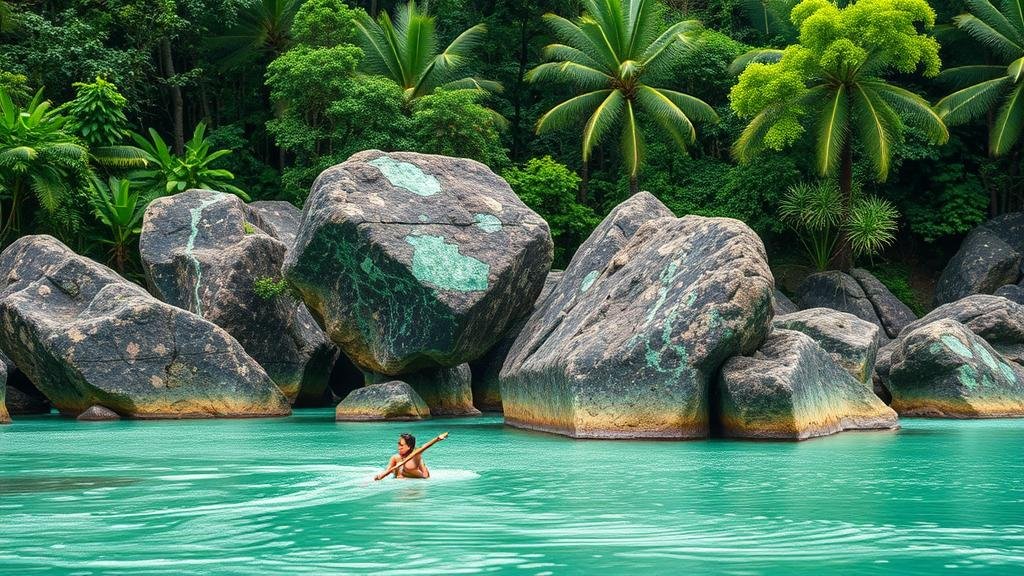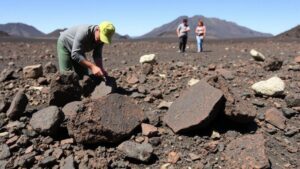Discovering the presence of jade boulders in the riverbeds of Myanmar’s Kachin State.
Discovering the Presence of Jade Boulders in the Riverbeds of Myanmar’s Kachin State
Kachin State in northern Myanmar is not only rich in natural beauty but is also famed for its deposits of jade, particularly in the form of boulders found within its riverbeds. For rockhounds and mineral collectors, the prospect of unearthing these precious stones represents both a tantalizing challenge and an incredible opportunity. This article delves into the geological conditions that facilitate the presence of jade in Kachin State, the significance of these discoveries, and practical tips for enthusiasts eager to explore this region.
The Geological Context of Jade in Kachin State
Jade is primarily composed of two minerals: jadeite and nephrite. jade found in Kachin State predominantly consists of jadeite, celebrated for its range of colors, notably green, lavender, and white. The genesis of jadeite involves a complex geological process, typically forming in high-pressure conditions found in subduction zones. As tectonic plates shift, heat and pressure facilitate the transformation of certain minerals into jadeite.
The presence of jade boulders in riverbeds can be attributed to the erosion of these deposits from the mountains, where they were initially formed, subsequently transported downriver. rivers in Kachin State, such as the Irrawaddy and its tributaries, serve as natural conduits that reveal these valuable stones.
The Intrinsic Value of Kachin Jade
Jade from Kachin State holds both aesthetic and economic value. It is revered in various cultures, especially within indigenous communities that consider it a symbol of prosperity and protection. From an economic perspective, the jade market is booming, with jadeite commanding prices upwards of $2 million per kilogram for exceptional pieces. For collectors and rockhounds, each jade boulder found is not merely an item of curiosity; it can represent significant financial and emotional investment.
Identifying the presence of jade boulders involves understanding some key characteristics:
- Color: Look for vibrant greens or subtle lavenders, which are often signs of high-quality jadeite.
- Texture: Jade usually has a smooth, slippery feel, often with a waxy surface.
- Weight: Jade is denser than many other stones; it feels heavy in hand. A piece of jadeite can weigh upwards of 3.3 grams per cubic centimeter.
Having a keen eye for these distinctive features can greatly enhance your chances of spotting jade within the riverbeds.
Practical Tips for Collectors
For rockhounds eager to explore Kachin States riverbeds in search of jade, the following practical tips can facilitate a more rewarding experience:
- Research the Area: Familiarize yourself with local laws and the geology of your chosen sites. Some areas may have restrictions on rock collecting.
- Equip Yourself: Bring essential tools like chisels, hammers, sieves, and protective gloves to aid in collecting without damaging your find.
- Practice Sustainable Collecting: Only collect what you can responsibly carry, and avoid disrupting the natural habitats around riverbeds.
- Connect with Local Guides: Hiring a knowledgeable guide can enhance your experience, providing insights into the best locations and safe practices.
Real-World Applications and Community Engagement
The discovery and collection of jade boulders in Kachin State extend beyond individual pursuits. jade industry is crucial to the local economy, providing jobs and supporting local artisans who craft intricate jewelry and sculptures. Engaging with the community allows rockhounds to deepen their understanding of jades cultural significance while contributing positively to local economies.
Through responsible collecting and community interaction, enthusiasts not only fulfill their passions but also champion the preservation of this remarkable natural resource.
Conclusion
In summary, the jade boulders within the riverbeds of Myanmars Kachin State present a captivating opportunity for rockhounds and mineral collectors. By understanding the geological processes, valuing the stones appropriately, and practicing ethical collection methods, enthusiasts can enhance their experiences while respecting the environment and the culture surrounding this precious resource. With each journey to these riverbeds, one embarks not just in pursuit of material treasures but also an exploration of the deep-rootedlegacy of jade in Myanmar.



